What's New
Displaying results 3981 - 3990 of 4052
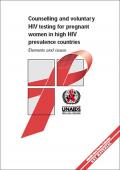
Resource | Publications,
For many years, little was known about preventing transmission of HIV infection from mother to child. Recently, however, many advances have been made in developing effective and affordable interventions that reduce the likelihood that a woman will pass HIV on to her baby. The two most important interventions—the provision of antiretroviral drugs and the avoidance of breastfeeding—only apply to HIV-positive women. Both therefore require that a woman know whether she is infect- ed by HIV. And yet in developing countries, where 95% of mother-to-child infections take place, there are very few counselling and testing services that allow a woman to find out her HIV status.
The document gives an overview of the magnitude of the problem of HIV transmission from mother to child. It then focuses on the benefits of counselling and voluntary HIV testing in the context of pregnancy, and discusses the content of such counselling. Operational issues and potential difficulties in setting up and maintaining such a service are explored.
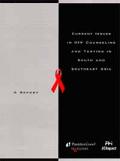
Resource | Publications,
As the HIV/AIDS pandemic spreads throughout South and Southeast Asia, there has been much debate in recent years about how best to incorporate HIV counseling and testing services into HIV/AIDS prevention, care, and support programs in the region. A wide variety of views exist about which approaches are most feasible, acceptable, and cost-effective. New public health imperatives, such as the prevention of mother-to child transmission (MTCT) of HIV, and difficult human rights issues also challenge counseling and testing service providers. Throughout the region, some countries have substantial programmatic and research experience in HIV counseling and testing, while others are still developing national policies and designing pilot interventions.
In recognition of the potential for regional exchange of views and experiences on this important issue, the Population Council's Horizons Project and Family Health International's Implementing AIDS Prevention and Care (FHI/IMPACT) Project organized a three-day workshop from February 1-3, 1999, in Mumbai, India.
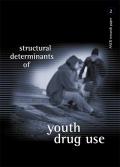
Resource | Publications,
This report was commissioned by the Australian National Council on Drugs and summarizes the available literature on the structural determinants of youth drug use. The breadth of information that could potentially be incorporated in this report is enormous, including literature from the fields of health (public health, child and adolescent development, mental health), economics, crime prevention, social policy and town planning.
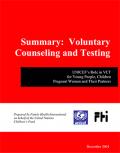
Resource | Publications,
There are no instant prescriptions on how to provide voluntary counseling and testing (VCT) for young people and children, as well as VCT for pregnant women and their partners. Further learning by doing and expanded partnerships in action are required. Effective and innovative responses to the psychosocial needs of young people and children (including counseling) require investment in addition to VCT services. The United Nation’s Children’s Fund (UNICEF) has a crucial role to play in this area.
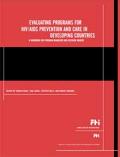
Resource | Tools,
Evaluation is too often an afterthought in the process of program implementation. This Handbook is dedicated to the premise that evaluation must be a critical part of the initial phases of planning effective HIV/AIDS prevention and care programs.
Readers of this Handbook will find that the authors have set the stage and provided the tools for a comprehensive and strategic approach to evaluation. The approaches they recommend yield useful and important information on the effectiveness of HIV/AIDS prevention, care, and support programs.
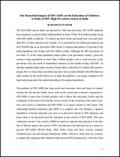
Resource | Publications,
The first AIDS case in India was detected in 1986 and since then, HIV/AIDS epidemic has emerged as a serious public health problem in India. Of the 39.4 million people living with HIV/AIDS worldwide, 7.1 million are from South and South East Asia and more than 70% of these infections are in India. It is estimated by the Indian government and the UNAIDS that as on December 2004, about 5.1 million individuals- 0.9 percent of the adult population were living with HIV/AIDS in India. Although the HIV prevalence of less than 1% of the adult population makes India a low prevalence country, given the country’s large population of more than a billion people, even a small increase in the prevalence rate can result in tremendous increases in the number living with HIV. In absolute numbers India ranks second to South Africa, which has 5.3 million HIV positive people, but it is feared that soon India may have more people infected with HIV than any other country in the world. Moreover, in India the epidemic is no longer confined to the high-risk groups and it has started spreading to the general population.
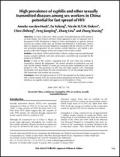
Resource | Publications,
In China, in the early 1980s, sexually transmitted diseases (STD) started to increase steeply. Sex workers and their clients appeared to play an important role in the spread of STD. Prostitution is illegal in China, and therefore no specific services exist for sex workers unless they are arrested and detained in re-education centres. Staff of a maternal and neonatal hospital in Guangzhou felt the need for an STD care and prevention programme for sex workers outside detention, and started a programme within their hospital, which was unique in the Chinese context.
Given the high prevalence of STD, the potential for the further spread of HIV is clearly present. STD care and prevention programmes for these women, outside detention, are urgently needed, and appear also to be feasible in China.
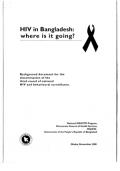
Resource | Publications,
Information from the third round of HIV surveillance in Bangladesh show that infection rates remain low, but it is now clear that this situation will not continue unless there is a radical reduction in risk behaviour. Sex workers in Bangladesh report among the highest number of partners per week in Asia and condom use are lower here than in any other Asian country in which it has been measured.
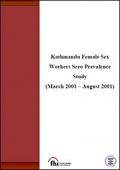
Resource | Publications,
This study was carried out among female sex workers in Kathmandu valley from March to August 2001 to determine the prevalence of HIV and syphilis and also to examine behavioral attitudes related to sexually transmitted disease.
Total of 500 female sex workers (300 street based and 200 non-street based) were included in the study. All the female sex workers who agreed to participate were included in the study. After obtaining an informed consent a questionnaire was administered and blood sample was collected.
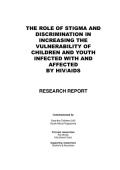
Resource | Publications,
This report illustrates the powerful and negative effects of stigma on those affected by HIV/AIDS. The stories from children are particularly powerful. They remind us all of the human tragedies that lie behind the statistics. HIV/AIDS touches us all in some way – through family, friends, or communities. Addressing the HIV/AIDS pandemic requires a strong and coordinated response from all sectors of society - government, NGOs, churches, communities and children, as well as the international community. But this response has to incorporate changes in attitude and behaviour at the personal level, if they are to be successful.





